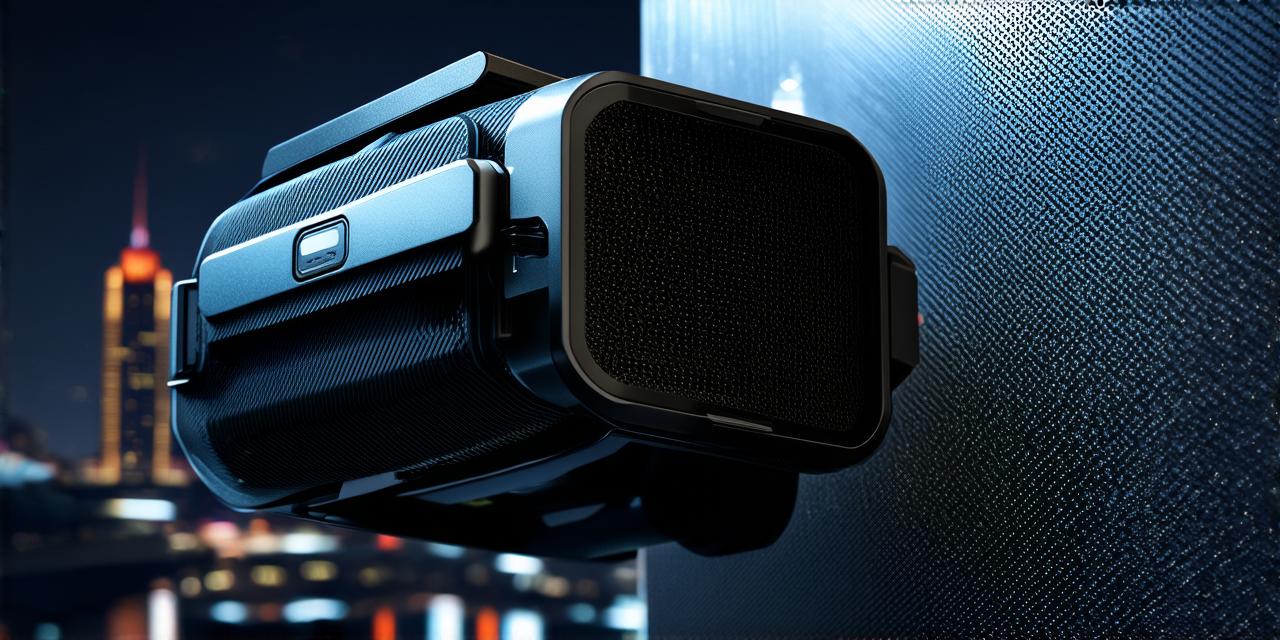Enhance Your Virtual Reality Experience with 3D Modeling
Virtual Reality (VR) technology has revolutionized the way we interact with digital content, allowing us to experience virtual environments in a way that feels like the real world. However, one of the key factors that determine the quality of a VR experience is the level of detail and realism of the 3D models used to create these environments. In this article, we will explore how 3D modeling can enhance your VR experience and provide tips for creating high-quality 3D models.
What is 3D Modeling?

3D modeling is a process of creating three-dimensional digital representations of objects or environments. These models are used in a variety of applications, including video games, architecture, engineering, and design. The main advantage of 3D modeling over traditional 2D methods is that it allows for a greater level of detail and realism. This is particularly important in VR, where the user is fully immersed in the virtual environment and expects a high level of quality.
How 3D Modeling Can Enhance Your VR Experience
Improved Visual Quality
One of the main ways that 3D modeling can enhance your VR experience is by improving the visual quality of the environment. With 3D models, you can add details such as textures, lighting effects, and materials that would be difficult or impossible to achieve with traditional 2D methods. This helps to create a more realistic and immersive environment that feels like the real world. For example, if you are creating a VR experience for a museum, you could use 3D modeling to create detailed replicas of historical artifacts that look and feel as if they were made from real materials.
Enhanced Interaction
Another way that 3D modeling can enhance your VR experience is by enabling more interactive elements in the environment. With 3D models, you can create objects that users can interact with in a variety of ways, such as picking them up, manipulating them, or even destroying them. This helps to create a more engaging and dynamic environment that feels like a true simulation of the real world. For instance, if you are creating a VR experience for a home remodeling project, you could use 3D modeling to let users pick out different furniture pieces and decorative items and see how they look in their virtual home before making any actual purchases.
Increased Realism
Finally, 3D modeling can enhance your VR experience by increasing the level of realism in the environment. With 3D models, you can create objects and environments that are more detailed and realistic than would be possible with traditional 2D methods. This helps to create a more immersive experience that feels like you are truly in the virtual world. For example, if you are creating a VR experience for a travel destination, you could use 3D modeling to create a highly detailed representation of the landscape or architecture of the location, giving users a sense of what it would be like to actually visit.
⟨p⟩
Tips for Creating High-Quality 3D Models
Use High-Quality Textures
One of the most important aspects of 3D modeling is creating textures that are realistic and visually appealing. This includes using high-quality images or videos to create the textures, as well as using tools like displacement maps and normal maps to add detail and depth to the model. For example, if you are creating a VR experience for a product launch, you could use 3D modeling to create highly detailed 3D models of the product and its packaging, using high-quality images or videos to create realistic textures.
Pay Attention to Lighting
Lighting is a critical aspect of creating a realistic 3D environment. By using techniques such as global illumination and real-time lighting, you can create a more dynamic and visually appealing environment that feels like it has depth and dimension. For instance, if you are creating a VR experience for an art exhibit, you could use 3D modeling to create highly detailed 3D models of the artwork, and then use realistic lighting to make the colors and textures look as if they were in a real gallery setting.
Increase Realism with Fine Details
Another way to increase realism in your VR environment is by adding fine details to your 3D models. This includes adding small textures, such as scratches or imperfections, to give the objects a more realistic look. For example, if you are creating a VR experience for a car show, you could use 3D modeling to create highly detailed 3D models of the cars, and then add small details such as dents or scratches to make them look like they were real vehicles.
Optimize Your Models for Performance
Finally, it’s important to optimize your 3D models for performance in VR environments. This includes minimizing the number of polygons and reducing the size of the textures to improve loading times and reduce the risk of motion sickness. For example, if you are creating a VR experience for a theme park, you could use 3D modeling to create highly detailed 3D models of the rides and attractions, but then optimize them for performance to ensure that users don’t experience any lag or motion sickness while riding.
